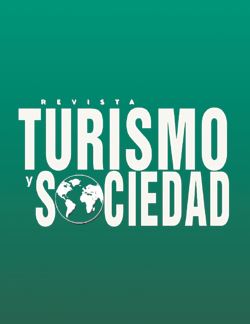Análisis e identificación de variables estratégicas de sostenibilidad, como herramientas de calidad del turismo en Villavicencio
Analysis and Identification of Strategic Sustainability Variables as Quality Tools for Tourism in Villavicencio
Contenido principal del artículo
Resumen
Villavicencio, la capital del departamento del Meta, destaca por su oferta cultural y paisajes naturales, es atractiva como destino para turistas locales, nacionales y extranjeros. Sin embargo, la ciudad enfrenta desafíos significativos debido a la presencia de numerosos operadores turísticos informales que limitan la calidad del servicio. En este sentido, la implementación de un modelo de turismo sostenible resulta como una alternativa crucial, capaz de integrar los intereses económicos, ambientales y sociales. Para abordar esta complejidad, se aplicaron metodologías como el Análisis Jerárquico de Procesos (AHP) y técnicas de análisis de redes como MICMAC y MACTOR. Estas permitieron identificar variables estratégicas y la influencia de actores clave del sector turístico de Villavicencio. Los resultados destacan la necesidad de fomentar prácticas responsables y regulaciones que aseguren servicios de alta calidad y promuevan la sostenibilidad. El análisis proporciona una base para decisiones estratégicas que no solo buscan mejorar la competitividad, sino también garantizar su viabilidad a largo plazo como destino turístico sostenible.
Palabras clave
Descargas
Detalles del artículo
Referencias / Ver
Ahmad, F., Draz, M. U., Su, L., & Rauf, A. (2019). Taking the Bad with the Good: The Nexus between Tourism and Environmental Degradation in the Lower Middle-Income Southeast Asian Economies. Journal of Cleaner Production. doi:10.1016/j.jclepro.2019.06.138 DOI: https://doi.org/10.1016/j.jclepro.2019.06.138
AIEST (1991). 41 International Association of Scientific Experts in Tourism Conference. AIEST. Alemania.
Alban, G. P. G., Arguello, A. E. V. y Molina, N. E. C. (2020). Metodologías de investigación educativa (descriptivas, experimentales, participativas, y de investigación-acción). Recimundo, 4(3), DOI: https://doi.org/10.26820/recimundo/4.(3).julio.2020.163-173
pp. 163-173.
Andereck KL and Nyaupane GP (2011) Exploring the nature of tourism and quality of life perceptions among residents. Journal of Travel Research 50(3), pp. 248–60. DOI: https://doi.org/10.1177/0047287510362918
Arbaiza, L. (2019). Cómo elaborar una tesis de grado. (1ª Ed.). Universidad ESAN, Alfaomega. https://www.alfaomegacloud.com/reader/como-elaborar-una-tesis-de-grado?location=18
Barati, A. A., Azadi, H., Dehghani Pour, M., Lebailly, P., & Qafori, M. (2019). Determining key agricultural strategic factors using AHP-MICMAC. Sustainability, 11(14), 3947. DOI: https://doi.org/10.3390/su11143947
Bekun, F. V., Alola, A. A., & Sarkodie, S. A. (2019). Toward a sustainable environment: Nexus between CO2 emissions, resource rent, renewable and nonrenewable energy in 16-EU countries. Science of the Total Environment, pp. 657, 1.023-1.029. DOI: https://doi.org/10.1016/j.scitotenv.2018.12.104
Brătucu, G., Băltescu, C., Neacșu, N., Boșcor, D., Țierean, O., & Madar, A. (2017). Approaching the Sustainable Development Practices in Mountain Tourism in the Romanian Carpathians. Sustainability, 9(11), 2051. doi:10.3390/su9112051 DOI: https://doi.org/10.3390/su9112051
Chew, E. Y. T., and Jahari, S. A. (2014), “Destination image as a mediator between Downloaded by University of Windsor at 23:26 31 May 2017 (PT) perceived risks and revisit intention: A case of post-disaster Japan”, Tourism Management, Vol. 40, pp. 382-393. DOI: https://doi.org/10.1016/j.tourman.2013.07.008
Choi, H. C., & Turk, E. S. (2006). Sustainability indicators for managing community tourism. In Quality-of-life community indicators for parks, recreation and tourism management (pp. 115-140). DOI: https://doi.org/10.1007/978-90-481-9861-0_7
Springer, Dordrecht.
Danish, & Wang, Z. (2018). Dynamic relationship between tourism, economic growth, and environmental quality. Journal of Sustainable Tourism, 26(11), pp. 1.928-1.943. DOI: https://doi.org/10.1080/09669582.2018.1526293
Demirovic ́ D, Petrovic ́ MD, Neto Monteiro LC, et al. (2016) An examination of competitiveness of rural tourism destinations from the supply side perspective – case of Vojvodina (Serbia). Journal of the Geographical Institute “Jovan Cvijic ́” 66, pp. 387-400. DOI: 10.2298/IJGI1603387D DOI: https://doi.org/10.2298/IJGI1603387D
Elmsalmi, M., & Hachicha, W. (2014, May). Risk mitigation strategies according to the supply actors’ objectives through MACTOR method. In 2014 International Conference on Advanced Logistics and Transport (ICALT) (pp. 362-367). IEEE. DOI: https://doi.org/10.1109/ICAdLT.2014.6866339
Escorcia Otálora, T. A. (2008). Análisis bibliométrico como herramienta para el seguimiento de publicaciones científicas, tesis y trabajos de grado.
Escorcia Otálora, T. A. (2008). Análisis bibliométrico como herramienta para el seguimiento de publicaciones científicas, tesis y trabajos de grado.
FONTUR (2022). Quiénes somos: considerando que muy pronto me presentaré ante la humanidad con el Independently Published.
Godet, M. (1979). The crisis in forecasting and the emergence of the” prospective” approach, with case studies in energy and air transport/translated by JD Pearse, Harry k. Lennon. Michel Godet.
Godet, M. (1997). Manuel of Strategic forecasting. Volume 2 (Manuel de Prospective Stratégique. Tome 2).
Gómez Romero, J. A., Soto Flores, R. y Garduño Román, S. (2019). Determinación de las Ponderaciones de los Criterios de Sustentabilidad Hidroeléctrica mediante la Combinación de los Métodos AHP y GP Extendida. Ingeniería, 24(2), pp. 116-142. DOI: https://doi.org/10.14483/23448393.14469
Gov.co. (2020). Instituto de Turismo del Meta - Elementos estratégicos. Instituto de Turismo del Meta. https://www.turismometa.gov.co/nuestra-entidad/elementos-estrategicos.html
Hsieh, C. M., Tsai, B. K., & Chen, H. S. (2017). Residents’ attitude toward aboriginal cultural tourism development: An integration of two theories. Sustainability, 9(6), pp. p. 903. DOI: https://doi.org/10.3390/su9060903
Jiménez, C. C. (2006). Turismo Sostenible: una revisión conceptual aplicada. El periplo sustentable,
(11), pp. 5-21.
Kuščer, K., Mihalič, T., & Pechlaner, H. (2017). Innovation, sustainable tourism and environments in mountain destination development: a comparative analysis of Austria, Slovenia and Switzerland. Journal of Sustainable Tourism, 25(4), pp. 489-504. DOI: https://doi.org/10.1080/09669582.2016.1223086
Lee, J. W., & Brahmasren, T. (2013). Investigating the influence of tourism on economic growth and carbon emissions: Evidence from panel analysis of the European Union. Tourism Management, pp. 69-76. DOI: https://doi.org/10.1016/j.tourman.2013.02.016
Lo, M. C., Chin, C. H., & Law, F. Y. (2019). Tourists’ perspectives on hard and soft services toward rural tourism destination competitiveness: Community support as a moderator. Tourism and Hospitality Research, 19(2), pp. 139-157. doi:10.1177/1467358417715677 DOI: https://doi.org/10.1177/1467358417715677
López, J. C. M., Robledo, S., & Duque-Méndez, N. D. (2017). Marketing emprendedor: una perspectiva cronológica utilizando tree of science. Revista Civilizar de Empresa y Economía, 7(13), pp. 113-123.
López, J. C. M., Robledo, S. y Duque-Méndez, N. D. (2017). Marketing emprendedor: una perspectiva cronológica utilizando tree of science. Revista Civilizar de Empresa y Economía, 7(13), pp. 113-123.
Lucchetti MC and Arcese G (2014) Tourism management and industrial ecology: A theoretical review. Sustainability 6: 4900–4909. DOI: 10.3390/su6084900 DOI: https://doi.org/10.3390/su6084900
Mamirkulova G, Mi J, Abbas J, Mahmood S, Mubeen R, Ziapour A (2020) New silk road infrastructure opportunities in developing tourism environment for residents better quality of life. Global Ecology and Conservation DOI: https://doi.org/10.1016/j.gecco.2020.e01194
Marković Vukadin, I., Zovko, M., & Krešić, D. (2020). Review and evaluation of existing international systems of tourism sustainability indicators. Hrvatski geografski glasnik, 82(1), pp. 85-110. DOI: https://doi.org/10.21861/HGG.2020.82.01.04
Mathew, P. V., & Sreejesh, S. (2017). Impact of responsible tourism on destination sustainability and quality of life of community in tourism destinations. Journal of Hospitality and Tourism management, 31, pp. 83-89. DOI: https://doi.org/10.1016/j.jhtm.2016.10.001
Mendoza, A., Solano, C., Palencia, D. y Garcia, D. (2019). Aplicación del proceso de jerarquía analítica (AHP) para la toma de decisión con juicios de expertos. Ingeniare. Revista chilena de ingeniería, 27(3), pp. 348-360. DOI: https://doi.org/10.4067/S0718-33052019000300348
Mineducacion. (2021). Caracterización del sector de turismo área de cualificación: turismo, hotelería y gastronomía-TUHG. https://www.colombiaaprende.edu.co/sites/default/files/files_public/2021-12/caracterizacion-sector-turismo.pdf
Mirakyan, A., & De Guio, R. (2015). Three domain modelling and uncertainty analysis: Applications in long range infrastructure planning. Springer. DOI: https://doi.org/10.1007/978-3-319-19572-8
Norma Técnica NTS-TS sectorial colombiana 001-1: Destinos turísticos de Colombia. Requisites de sostenibilidad (2006) (testimony of ICONTEC). https://www.parquesnacionales.gov.co/portal/wp-content/uploads/2013/11/SSNA _Norma-Tecnica-Sectorial-Colombiana-001-1.pdf
OMT (2022). ¿Por qué el Turismo? UNWTO. https://www.unwto.org/es/turismo
Organización Mundial del Turismo (1998). Guía para administradores locales: desarrollo turístico sostenible. OMT. España.
Peña, A. I. P., Jamilena, D. M. F., & Molina, M. Á. R. (2012). The perceived value of the rural tourism stay and its effect on rural tourist behaviour. Journal of Sustainable Tourism, 20(8), pp. 1.045-1.065. DOI: https://doi.org/10.1080/09669582.2012.667108
Robledo, S., Osorio, G., & López, C. (2014). Networking en pequeña empresa: una revisión bibliográfica utilizando la teoría de grafos. Revista vínculos, 11(2), pp. 6-16.
Sampieri, R. H. (2018). Metodología de la investigación: las rutas cuantitativa, cualitativa y mixta. McGraw Hill México.
Sampieri, R., Fernández, C. y Baptista, L. (2014). Definiciones de los enfoques cuantitativo y cualitativo, sus similitudes y diferencias. RH Sampieri, Metodología de la Investivación, 11-1.
Spencer DM and Nsiah C (2013) The economic consequences of community support for tourism: A case study of a heritage fish hatchery. Tourism Management 34, pp. 221-230. DOI: https://doi.org/10.1016/j.tourman.2012.04.003
Tang, Z., Shi, C. B., & Liu, Z. (2011). Sustainable development of tourism industry in China under the low-carbon economy. Energy Procedia, 5, 1303-1307. DOI: https://doi.org/10.1016/j.egypro.2011.03.226
Torres, M., Salazar, F. G., & Paz, K. (2019). Métodos de recolección de datos para una investigación. Recuperado de http://fgsalazar.net/LANDIVAR/ING-PRIMERO/boletin03/URL _03_BAS01.pdf
UNWTO (2022). Dashboard de datos turísticos de la OMT. OMT. https://www.unwto.org/es/datosturismo/resultados-turisticos-globales-regionales
Usman, O., Bekun, F. V., & Ike, G. N. (2020). Democracy and tourism demand in European countries: does environmental performance matter? Environmental Science and Pollution Research, 27(30), 38353-38359. DOI: https://doi.org/10.1007/s11356-020-10258-5
Vargas Martínez, E. E., Castillo Nechar, M., & Zizumbo Villarreal, L. (2011). Turismo y sustentabilidad: una reflexión epistemológica. Estudios y perspectivas en turismo, 20(3), pp. 706-721.
WTTC (2022). News article. Wttc.org. https://wttc.org/news-article/the-world-travel-and-tourismcouncil-reveals-massive-increase-in-global-international-inbound-travel
Zhang, Y., Lee, T. J., & Xiong, Y. (2019). Residents’ perception of the influence of luxury chain hotels on ethnic tourism communities. Journal of Tourism and Cultural Change, 17(4), pp. 432-448. DOI: https://doi.org/10.1080/14766825.2019.1591700
Zuluaga, M., Robledo, S., Osorio-Zuluaga, G. A., Yathe, L., Gonzalez, D., & Taborda, G. (2016). Metabolomics and pesticides: systematic literature review using graph theory for analysis of references. Nova, 14(25), pp. 121-138.
Zuluaga, M., Robledo, S., Osorio-Zuluaga, G. A., Yathe, L., Gonzalez, D., & Taborda, G. (2016). Metabolomics and pesticides: systematic literature review using graph theory for analysis of references. Nova, 14(25), pp. 121-138. DOI: https://doi.org/10.22490/24629448.1735










